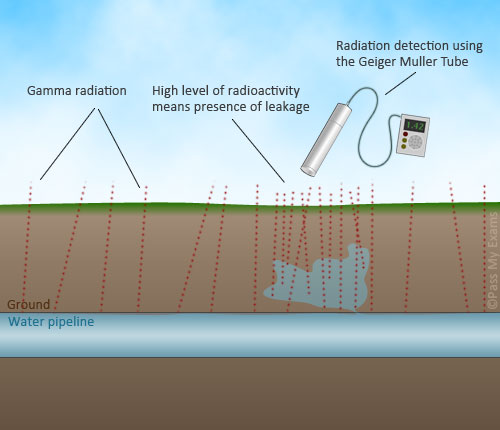Beta Radiation in Leak Detection
Leaks in underground pipelines can be detected by the injection of a radioactive isotope. This is achieved by adding a small amount of a radioisotope which is a source of beta radiation to the fluid. The area above ground where a high intensity of beta radiation is detected will pin point the leak source in the pipeline. This saves time as the correct area is dug up.
The use of a radioisotope that emits beta radiation is important as beta radiations have the correct penetrating power to travel through the soil to give a measureable reading above ground. At the source of the leak the intensity of the beta radiations will be high as no energy is lost to the pipe wall. An alpha source would be of no use as the alpha radiations would be absorbed by the soil. Gamma rays on the other hand have too much energy and would pass through the walls of the pipe and therefore be no more intense at the source of the leak.

It is important to use a radioisotope with a half life of a few hours or days. This is so it remains long enough for the leak to be detected but not too long that it may pose a safety or health risk. Sodium 24 is an example of a radioisotope used in leak detection. It has a half life of about 15 hours and emits beta radiation along with gamma radiation.
